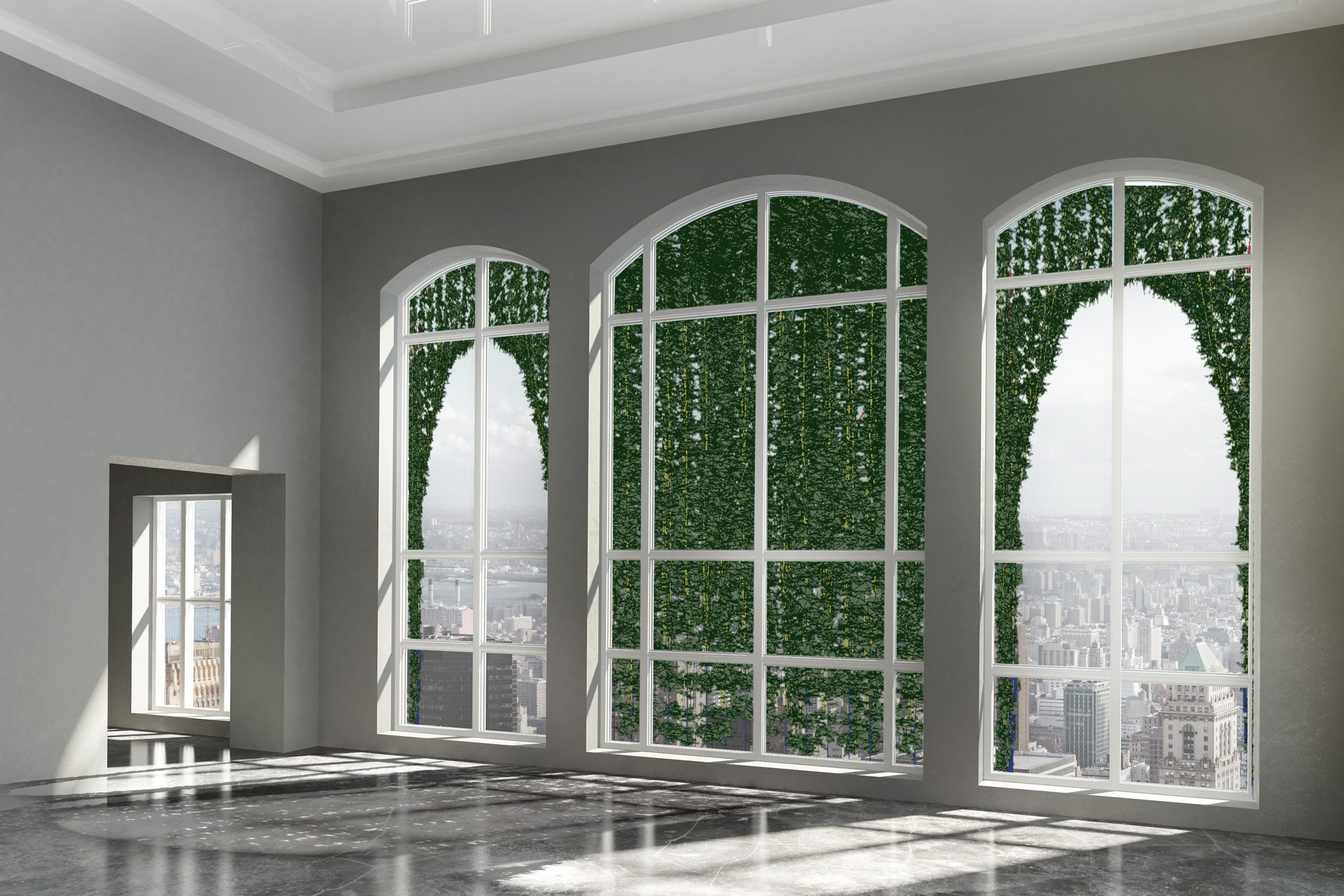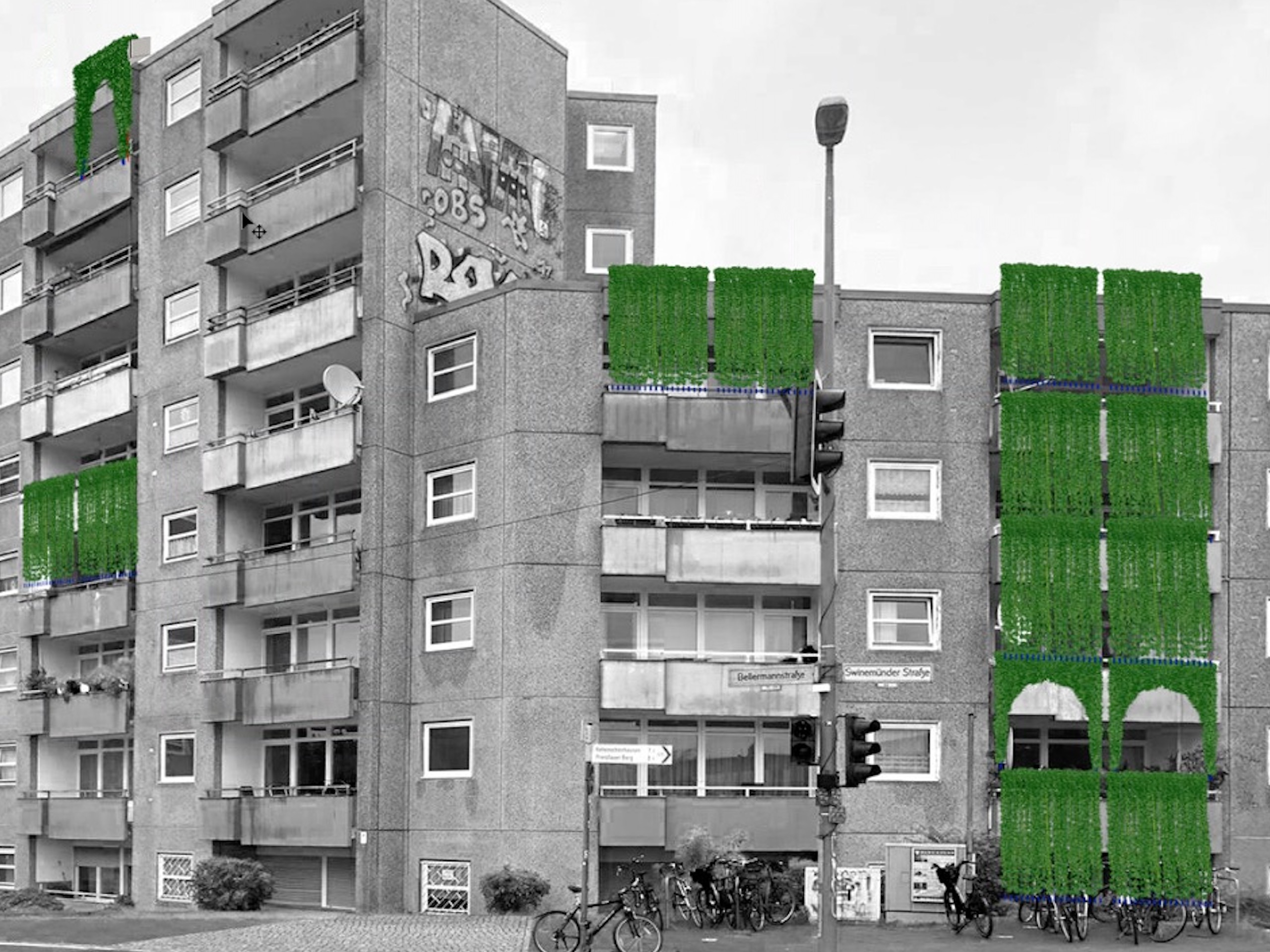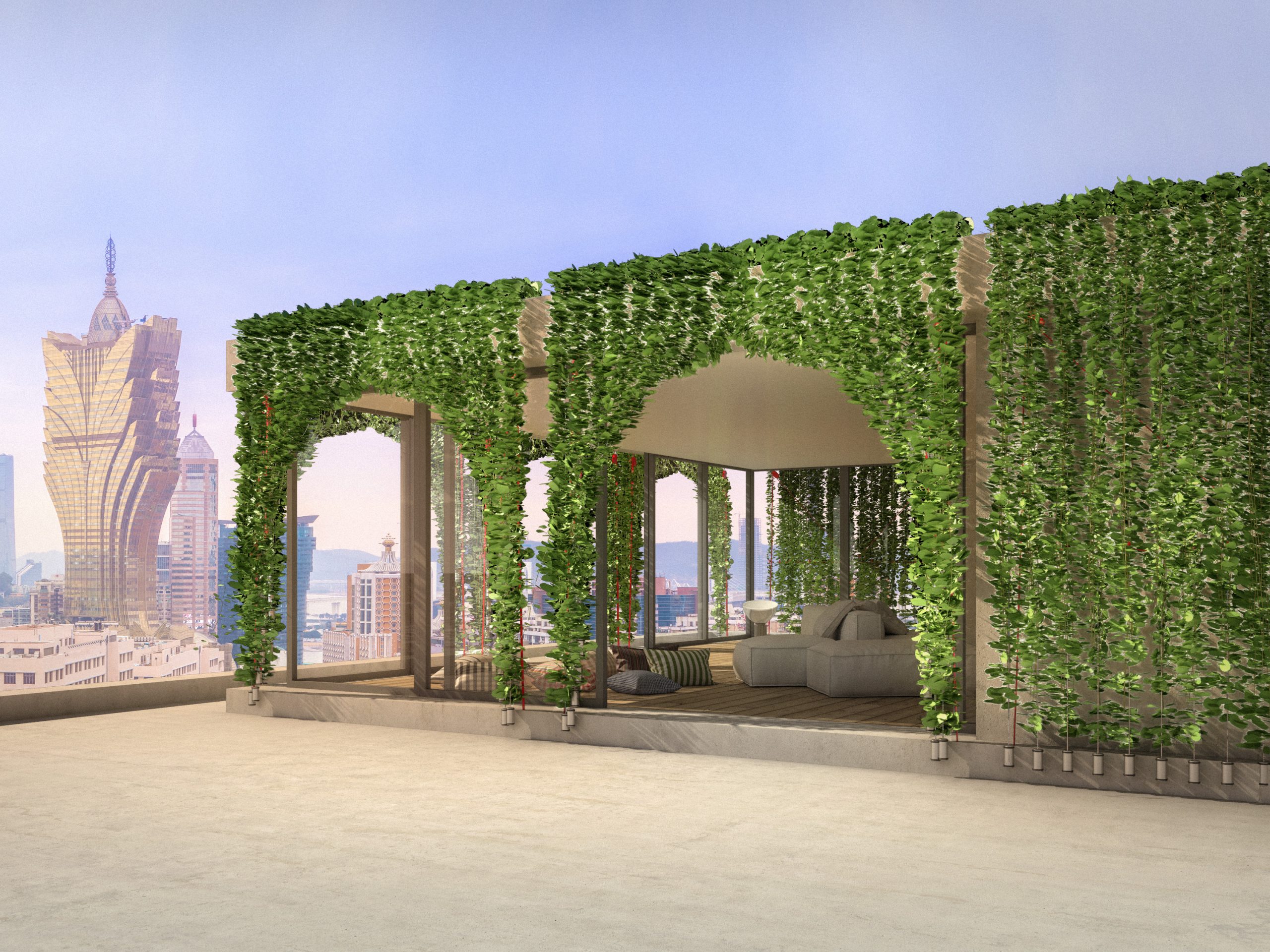BIOBLINDS – The Green Skyline Initiative

Useful information
- Team members
- Jan Engel Leon Bittner
- Country
- Germany
- Keywords
- Sustainability DIY Urban Farming Green Cities Democratic Design Speculative Design
Short Description
Bioblinds offer a free, open-source impulse for construction plans for plant curtains for everybody.
Detailed Description
Bioblinds are a future-oriented combination of digital innovation and everybody's own sustainability imperative, which can be fulfilled individually through our do-it-yourself design for plant curtains. Bioblinds stand for kinetic greenery of glass surfaces. We see Bioblinds as an impetus for green cities that make sensible use of the possibilities of the platform economy. Using an open-source online configurator, every person in the world should be able to construct a functional, living outdoor curtain with special tendril plants (also edible plants like Kiwi, berries or wine) and our mechanism. Our impulse for plant curtains can be adapted with normal products from any hardware or plant store. Bioblinds want to engage as many people as possible in 'The Green Skyline Initiative' to share their experiences and findings.
This project is future-oriented, designed for a democratic use and constant collaborative development. Currently, we work on roses Bioblinds for a cowshed for cows.
Project Details
- Does your design take social and cultural challenges and human wellbeing into consideration?
Bioblinds aim at calming views, more biodiversity, possible food production at home and thermal effects for everybody worldwide – especially in urban contexts. As the entire project is designed in English we try to include as many people as possible. Yet we also plan a Spanish and Chinese version. Due to the fact that our impulse instruction plan is for free and can be built with normal (cheap) products from any hardware or plant store, we also hope to reach as many people as possible.
- Does your design support sustainable production, embodying circular or regenerative design practices?
Yes, on various levels. First, Bioblinds are plant curtains for theoretically every window or door in urban or rural environments. Therefore, Bioblinds increase oxygen production, CO2 compensation and biodiversity – directly infront of theoretically every glass facade. Second, as Bioblinds are a not-for-profit project, it is also sustainable in the way that more people can use it. Third, by the use of, exclusively, using open source technology, we ensured that our design can be adapted to every possible circumstances, needs or, specifically, architecture – by everybody.
- Does your design use principles of distribution and open source?
Everybody is invited to join our initiative, collaborate, contribute and participate in the research.
Bioblinds and the corresponding mechanism are licensed by Creative Commons.
With our CC BY 4.0 license we ensure everybody worlwide can use our idea and mechanism for free and can make adaptions and elaborate the impulse further. The only restriction is to give an appropriate credit and indicate if changes were made. To make it easy for everyone to contribute to our research, we have created an online 'Bioblinds Hub' so that everyone can share their experience in developing their own Bioblinds. Our development is distributed and iterative. This means that everyone can create their own individual modification based on a Bioblinds version and share it with the community. We are currently working on a 'Plant Research Hub' to be able to create an open
database for various plant species in combination with Bioblinds. Our dream is an online configurator based on all the data sets collected in order to be able to generate individual Bioblinds instructions. We want to be able to constantly improve it through the power of the community.
- Does your design promote awareness of responsible design and consumption?
Yes, as Bioblinds bring nature into cities. They promote awareness already by enriching the view out of every window or door. First, they engage people in the context of responsibility towards nature while they think about building Bioblinds, then by constructing them and finally by cultivating and seeing the plant curtains – last thing every day.
Images


